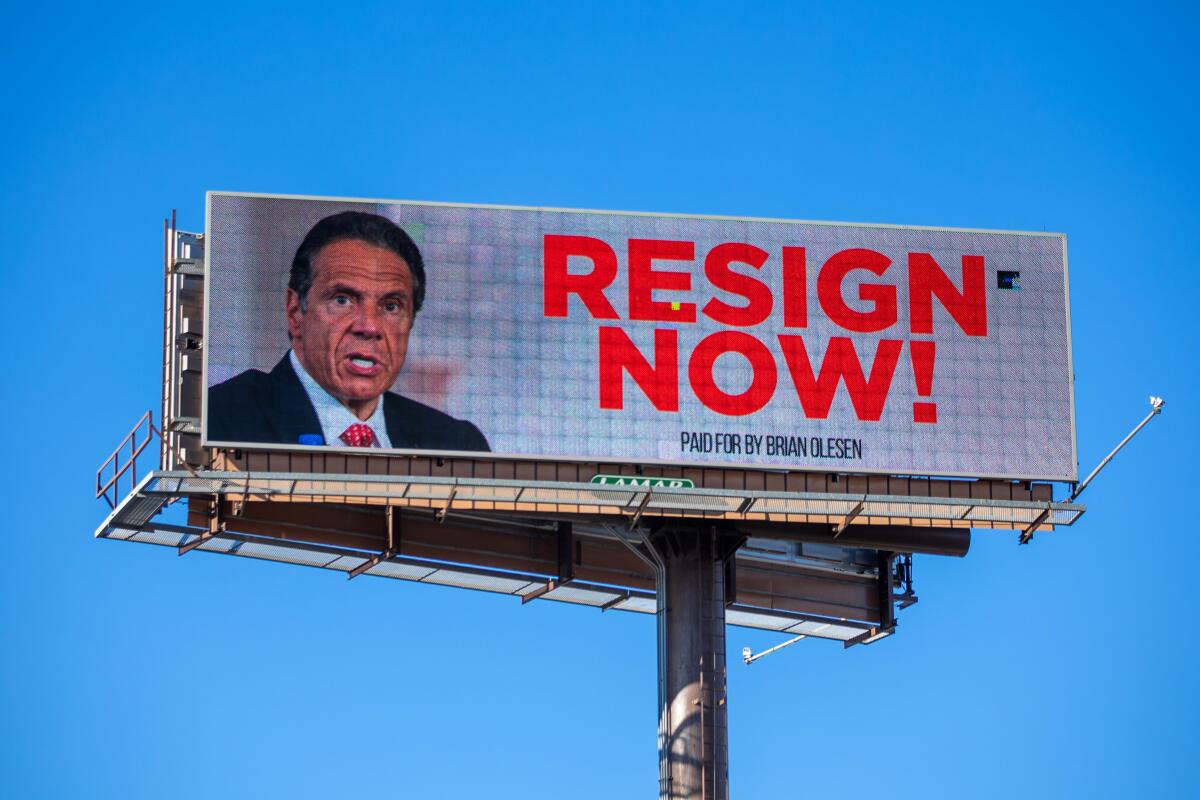Column: One week’s news reveals the revolutionary strength of the Me Too movement

- Share via
Movements are not trending topics. They’re not celebrity scandals that excite the mediasphere like brush fires. They are paradigm shifts, and they do their work through legislation, court proceedings, disciplinary measures and the evolution of social hierarchies, political power and the allocation of capital.
In 2006, when Twitter hashtags didn’t exist, the activist Tarana Burke coined Me Too to promote solidarity among survivors of sexual violence, especially women of color. Her term succinctly described a formidable campaign far more powerfully than “fight the patriarchy” does. Patriarchy describes the rigid top of a power structure; Me Too describes a dynamic grass-roots threat to it.
For the record:
9:23 a.m. March 5, 2021An earlier version of this column placed Alabama State University in Selma. It is in Montgomery.
The central tenet of Burke’s political philosophy? That sexual violence is so widespread in America as to represent its own sociology. That sociology establishes brutal power relations, with rituals of sexual subjugation, exploitation and humiliation. It comes with specific practices of witness intimidation and silencing. Institutions such as corrections departments, the Boy Scouts, the military, sports programs, universities and religious organizations have protected it systematically, through payoffs, settlements and extrajudicial arbitration.
Having survived sexual violence during her childhood in a Bronx housing project, Burke as a teenager led campaigns to address racial discrimination and economic injustice. Her advocacy continued at Alabama State University, and after college when she moved to Selma.
It was in Selma that Burke encapsulated her approach with the simple phrase “Me Too,” a prompt for girls and women — and eventually people across the gender spectrum — to tell their stories and find social and legal support. After a decade of building resources and protocols for testifying, reporting and prosecuting sexual violence, Burke’s movement was name-checked by actress Alyssa Milano in 2017, and what Burke had developed snowballed.
In fact, perhaps more than any other contemporary political philosophy, Burke’s Me Too ideology has passed into what philosophers call “praxis”— the application of a theory to ordinary life. More people should know Tarana Burke’s name.
And in case there’s any doubt that her project has radically changed society, it’s worth noting the progress seen in swifter and surer reaction — and even remediation — when sexual subjugation is exposed. Systematic abuse is met now by revelation and collective resistance.
Avatars of powerful institutions can’t hide. The governor of New York, Andrew Cuomo, has denied inappropriate touching but has apologized for making people uncomfortable and is under investigation after two former aides and a woman he encountered socially have accused him of sexual harassment and, in the case of one of the aides, a forced kiss.
And then there’s the clergy. This week, a new accuser joined two brothers who came forward alleging sexual abuse by the Rev. Michael Pfleger, a Catholic priest in the Archdiocese of Chicago, when they were teenagers and young men in the 1970s. Pfleger, too, denies the charges.
In North Carolina, a lawsuit was brought Wednesday accusing the administrators and faculty at the Asheville School, an exclusive boarding school, of covering up sexual abuse by a teacher.
In military news, the Rand Corp. released a study looking at “the underlying workplace disorder” of “ambient sexual harassment” among service members, showing that it has a high correlation with “sexual assault risk.”
In show biz news, the “Allen v. Farrow” HBO documentary about Woody Allen’s alleged sexual exploitation and abuse of women and girls, including his adopted daughter, continued to create waves this week. And George Clooney announced that he’s producing a docuseries about sexual abuse by Dr. Richard Strauss at Ohio State University.
As of December 2020, the university’s independent investigation had fielded reports of more than 2,000 instances of fondling and nearly 150 rapes of male student-athletes committed by Strauss, a faculty member who died by suicide in 2005. According to the Columbus Dispatch newspaper, Ohio State has paid $46.7 million to 185 plaintiffs, with more lawsuits yet to be resolved.
On Tuesday, Olympic gold medalist Aly Raisman, in a CNN interview, called for a broad, independent and, most important, publicly transparent investigation into USA Gymnastics and the years-long sexual abuse of gymnasts in the U.S. program. That abuse was made clear in the cases of sports doctor Larry Nassar, now serving a 175-year sentence for sexual misconduct, and former Olympic gymnastic coach John Geddert, who was charged last week with sexual assault and human trafficking, and who died by suicide just hours later.
Finally, on the financial side, the Boy Scouts released a Chapter 11 bankruptcy plan explaining how they can compensate some 85,000 potential victims who came forward last year with claims of sexual abuse by Scout leaders and others involved in the organization. Eighty-five thousand.
That’s the news from just this week.
Many of these cases go back years, if not decades, and only now are they being openly talked about and adjudicated. In the news are tens of thousands of people, the majority of them men this time, coming to terms with systems of sexual violence so terrifying as to be unspeakable. Until now. With the simple words “Me Too,” Tarana Burke made these crimes eminently speakable — and, to survivors everywhere, that has made a world of difference.
@page88
More to Read
A cure for the common opinion
Get thought-provoking perspectives with our weekly newsletter.
You may occasionally receive promotional content from the Los Angeles Times.










